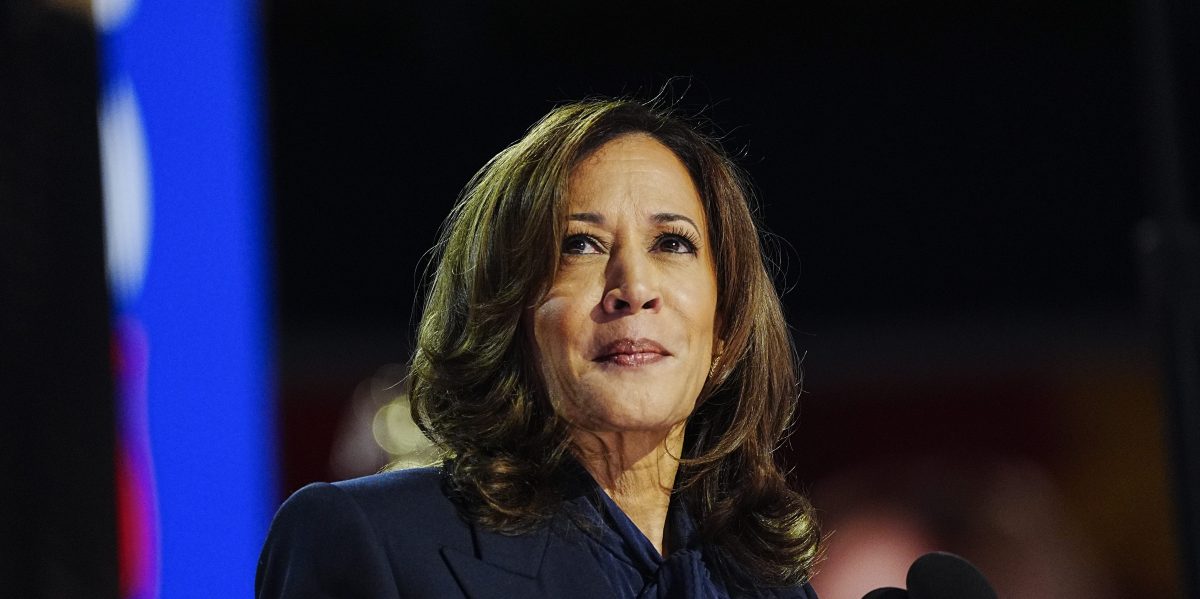“As Commander in Chief,” Vice President Kamala Harris said in her acceptance speech at the Democratic National Convention last week, “I will ensure America always has the strongest, most lethal fighting force in the world.”
Harris’s bellicose bluster received raucous applause from many in Chicago (although not from her stepdaughter, Ella Emhoff, or younger sister, Maya Harris) but struck some observers and pundits as especially “hawkish.” In reality, Harris is merely uniting two popular threads of Beltway boasting about the U.S. military.
For the last two decades, successive presidents have competed to offer the most hyperbolic assessment of the U.S. military. For George W. Bush, the U.S. armed forces were “the greatest force for human liberation the world has ever known.” His successor Barack Obama declared them “the finest fighting force that the world has ever known.” Donald Trump said America had the “greatest military in the world.” Joe Biden returned to Obama-era levels of praise, proclaiming them “the greatest fighting force the world has ever known.” (Just this week Harris repeated the exact line.)
The grandiosity of these claims is no doubt meant to paper over a dismal record: a bloody stalemate in Korea that still lacks a peace treaty, a devastating loss in Vietnam, a forever war in Iraq, a blowback-generator of a conflict in Libya, the Taliban’s victory in Afghanistan, a dead end in Syria, an unending stalemate in Somalia, failures in the African Sahel, and on and on.
“Lethality,” on the other hand, is a term of art uncomplicated by military fiascos, deadlocks, and failures, which has made it into a favorite Pentagon buzzword. Nobody doubts that the United States can kill people. Dead civilians from Southeast Asia to the Middle East to the Horn of Africa attest to this brutal fact.
When the Pentagon talks about lethality, however, it’s often couched in bloodless (and often incomprehensible) language divorced from the reality of reeking corpses with lifeless eyes and shattered limbs.
In his 2022 National Defense Strategy, Defense Secretary Lloyd Austin laid out five key traits of America’s “future force.” The first among them: “Lethal.” In Pentagon-speak, in that instance, “lethal” meant possessing “anti-access/area-denial-insensitive strike capabilities that can penetrate defense at range.”
In 2017, then-Army Chief of Staff Gen. Mark Milley said his “Modernization Priorities for the United States Army” had “one simple focus: make Soldiers and units more lethal.” Milley wrote about not only “shooting” and “squad combat weapons,” but also things like “improving acquisition business processes.” Before he retired last year, as chair of the Joint Chiefs of Staff, Milley said the U.S. military needed to “maintain our current decisive advantage or lethality or readiness or competence by optimizing these technologies for the conduct of war.” The technologies in question were not, however, bombs or missiles but artificial intelligence and quantum computing.
Lethality is the ultimate Pentagon hobby horse, a shiny and fuzzily defined goal that can be ridden up the DoD ladder, and everybody in the military wants to get in on it.
In discussing the 2024 Pentagon budget request, Deputy Defense Secretary Kathleen H. Hicks said the funding would deliver “combat-credible joint forces that are the most lethal, resilient, survivable, agile and responsive in the world.” For the Army National Guard, lethality is wrapped up with retention rates. While medicine’s founding principle may be “first, do no harm,” Navy Medicine boasts that it “supports the force’s lethality by maintaining state-of-the-art medical and operational readiness.” For the Defense Logistics Agency, the magic recipe to “increase infantry squad lethality” is a battlefield-ready pepperoni pizza “with a high-heat-tolerant mozzarella cheese.”
As Sen. Bernie Sanders, I-Vt., highlighted in a criticism of Harris’s speech, the nebulous goal of lethality can also justify seemingly endless military spending.
“In all due respect, the United States is now spending more than the next 10 nations combined on defense,” said Sanders on ABC’s “This Week.” “We want the strongest defense in the world, but I do think enough is enough. You’re seeing military contractors profits soaring, and I think we can have the strongest defense in the world without spending a trillion dollars a year.”
If history is any guide, lethality in a Harris presidency won’t be limited to Pentagon personal pan pizzas with three-year shelf lives. Dead civilians in Libya, Somalia, Yemen, or some other far-off land will likely attest to the efficacy of the greatest fighting force the world has ever known.
The Intercept reached out to the Harris campaign for comment on Sanders’s critique, what lethality means to the newly minted Democratic nominee and just how the “most lethal fighting force in the world” would be employed if she were president. The Intercept did not hear back prior to publication.
